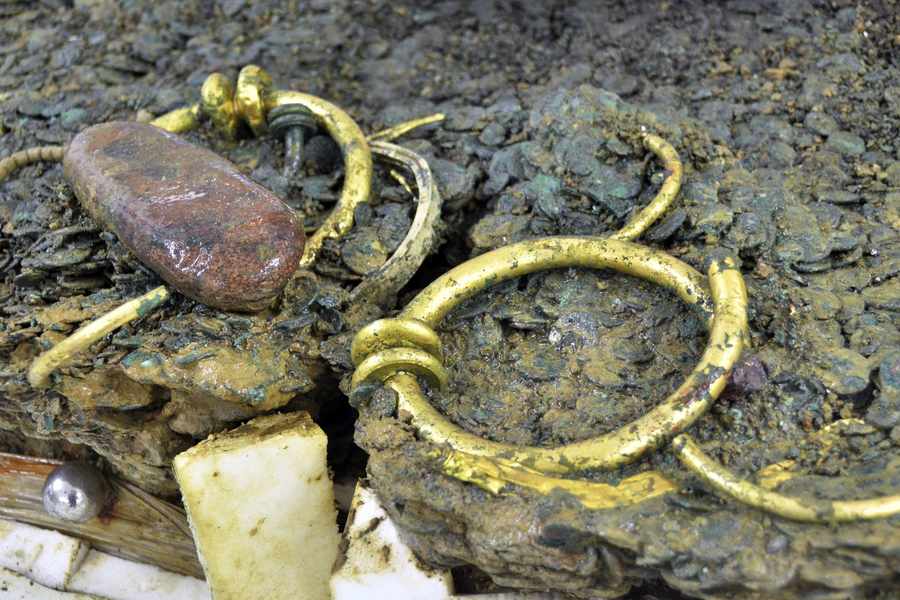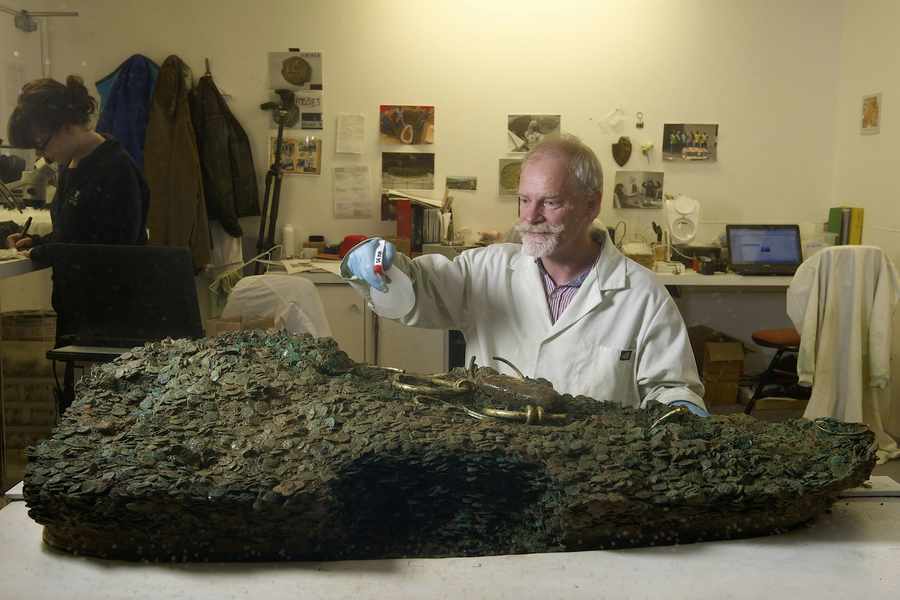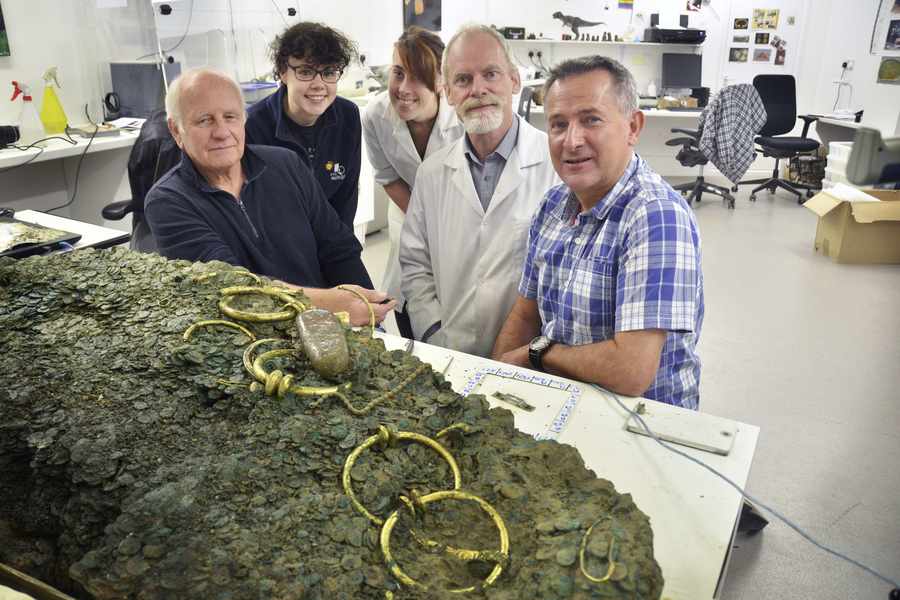Staff at Jersey Heritage who have been painstakingly scanning, removing, cleaning and cataloguing the collection have reached a crucial stage in the operation that could reveal exciting new discoveries.

- Torques were worn by people of high status or rank within a tribe.
- They are a stiff metal ring designed to be worn around the neck.
- The gold torques found in Jersey appear to have a clasping mechanism at one end.
- Depictions of Celtic gods include deities wearing or carrying torques, possibly representing power or wealth.*Some torques have been found to contain stones or metal pieces inside, leading researcher to theorise they could have been used as rattles in rituals.[/breakout]
From Saturday 21 November the team at La Hougue Bie, where the hoard and operation to process it is on show to the public, workers will begin removing the gold torques that were buried with the coins.
When the Iron Age treasure was first found by metal detectorists Reg Mead and Richard Miles in 2012, a single strip of gold was visible at one edge of the hoard, offering a hint at what lay inside.
Staff, led by Jersey Museum conservator Neil Mahrer, have removed around 30,000 coins to date revealing 15 large pieces of gold jewellery.
Mr Mahrer said: ‘What we don’t know is if we move these will there be more gold underneath?
‘We’ve removed about a 5cm deep layer of coins and in doing that we’ve revealed all this jewellery.
‘Nothing reacts with gold so they are not bonded together by corrosion, they are just sort of lying there. It’s just a question of gently prying them loose.
‘When they are out it will give us the chance to see both sides of them in full view for the first time.’
Mr Mahrer explained that Jersey Heritage had taken advice from experts working on the Staffordshire hoard of Anglo-Saxon gold and silver, and said that they had taken a very cautious approach to the work.


Once removed the gold will not be cleaned straight away, but will first be analysed to give as much information about any organic matter it contains as possible.
Staining on some of the torques could show that they were filled with a kind of resin, or bees wax to reinforce them while they were worn.
Mr Mahrer added that the torques appeared to have decorative details as well.
‘We know we’ve got roughly 15 large pieces of gold jewellery and we’re planning to remove them over seven days,’ he said.
‘People will be able to see the work happening. We had a three-year timetable at the start and we knew what we had to do, so we’re quite happy with what we are doing.
‘But that’s only been possible with the team of volunteers we have.’







